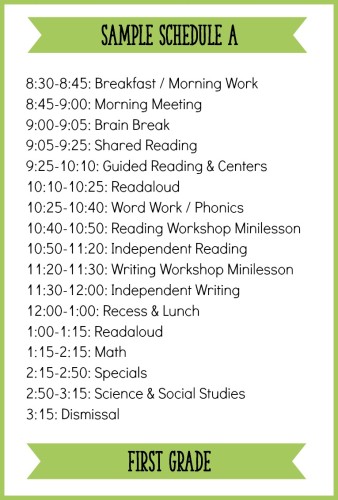
“Curriculum-based measurement” (CBM) has become “the most likely procedure to be used for Response to Intervention (RTI) evaluations of academic performance” (Christ & Hintze, 2007, p. 95). The questions that underlie RTI are, How do you decide whether a child is learning optimally? And what do you do, instructionally, if he or she is not? Proponents argue that the best way to answer the first question for reading is, one to five times per week, to count how many correct words from a standardized grade-level text a child can read in one minute. This is referred to as CBM-R (it also appears in testing systems such as DIBELS and AIMSweb). The rationale is that CBM-R is a brief test of reading fluency, and that fluency approximates (is a proxy measure for) overall reading competence.
Because regular instruction is commonly considered Tier 1 of an RTI system, and because CBM-R provides an apparently simple technical solution to assessment in reading, CBM-R has colonized regular education as well as RTI. We must consider the appropriateness of this logic.
Arguments against CBM include the following:
- CBM-R is not a valid measure of reading comprehension or even of fluency(Cramer & Rosenfield, 2008; Pressley, Hilden, & Shankland, 2005; Samuels, 2007). It tells us only how fast a child reads “grade-level” text. It does not tell us whether the materials used for instruction are appropriate or whether the child is building a meaning-directed system, and it doesn’t document the strategies the child is using—the kind of information necessary to adapt instruction.
- CBM-R used to evaluate growth in reading speed is time-consuming. Reliably estimating whether a student is becoming a sufficiently faster reader requires generating a hypothetical expected growth rate and measuring reading speed five times a week for over six weeks, or once a week for 3–4 months to see whether the actual growth rate meets the expected rate (Ardoin, Christ, Morena, Cormier, & Klingbeil, 2013; Thornblad & Christ, 2014). In other words, even testing children every day, reliably deciding that instruction needs to be changed takes over six weeks and gives no information on what might improve instruction.
- CBM-R can misdirect instruction. CBM-R is merely a proxy for reading and, under pressure, it changes the goal of teaching and the way teacher and child make sense of errors. For example, suppose a child misreads a word and returns to correct the error because it doesn’t make sense. From a CBM perspective, this is significant only because it reduces reading speed, making it a negative indicator of development. By contrast, if we are interested in building independence and self-regulation rather than speed, the nature of the error and its correction become significant because of what they indicate about processing, the development of self-monitoring and an executive system (Clay, 1991; Vellutino & Scanlon, 2002). Focusing instruction on speed and accuracy does not build problem-solving, self-correcting, and independence. We have to weigh the consequences for instructional decisions of a constant focus on reading speed (a relatively minor dimension of reading).
- CBM-R requires some students to have frequent negative reading experiences. Because CBM-R uses standardized grade-level texts, it regularly requires many children, under time pressure, to routinely read text that is too difficult for them, undermining their sense of competence and disrupting productive reading strategies.
- CBM-R is not based on curriculum. “Curriculum-based” sounds like a good idea, but counting the number of words a child reads correctly on a standardized text is not curriculum based any more than any other test. (The same is true of standardized CBM spelling lists and so forth, which are used regardless of the curriculum.) There are many other more productive assessment practices that can be used to monitor children’s literate development without additional assessments that do not inform instruction and which are genuinely curriculum based. These will be the focus of a subsequent blog.
Peter Johnston, PhD, is Professor Emeritus at the University of Albany-SUNY. He is a member of the ILA Literacy Research Panel.
The ILA Literacy Research Panel uses this blog to connect educators around the world with research relevant to policy and practice. Reader response is welcomed via e-mail.
References
Ardoin, S.P., Christ, T.J., Morena, L.S., Cormier, D.C., & Klingbeil, D.A. (2013). A systematic review and summarization of the recommendations and research surrounding Curriculum-Based Measurement of oral reading fluency (CBM-R) decision rules. Journal of School Psychology, 51(1), 1–18. doi:10.1016/j.jsp.2012.09.004
Christ, T.J., & Hintze, J.M. (2007). Psychometric considerations when evaluating Response to Intervention. In S.R. Jimerson, M.K. Burns, & A.M. VanDerHeyden (Eds.),Handbook of Response to Intervention: The science and practice of assessment and intervention (pp. 93–105). New York, NY: Springer.
Clay, M.M. (1991). Becoming literate: The construction of inner control. Portsmouth, NH: Heinemann.
Cramer, K., & Rosenfield, S. (2008). Effect of degree of challenge on reading performance.
Reading & Writing Quarterly,
24(1), 119–137.
Pressley, M., Hilden, K., & Shankland, R. (2005).
An evaluation of end-grade-3 Dynamic Indicators of Basic Early Literacy Skills (DIBELS): Speed reading without comprehension, predicting little.
Samuels, S. J. (2007). The DIBELS tests: Is speed of barking at print what we mean by reading fluency? Reading Research Quarterly, 42(4), 563–566.
Thornblad, S.C., & Christ, T.J. (2014). Curriculum-based measurement of reading: Is 6 weeks of daily progress monitoring enough? School Psychology Review, 43(1), 19–29.
Vellutino, F.R., & Scanlon, D.M. (2002). The Interactive Strategies approach to reading intervention. Contemporary Educational Psychology, 27(4), 573–635.





